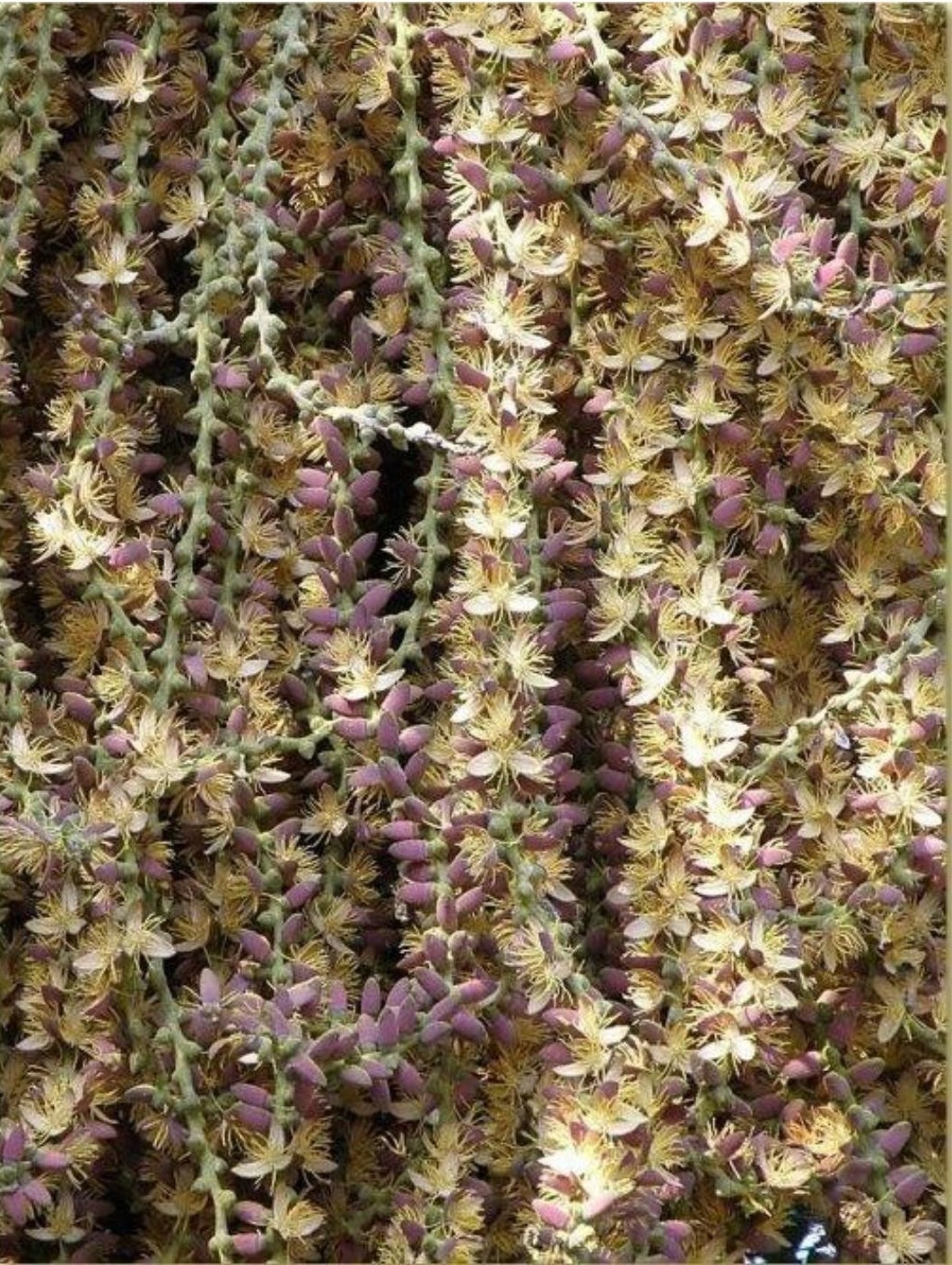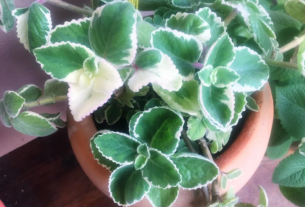By Tommy Clarkson from the December 2017 Edition
Toddy Palm Caryota urens
Family: Arecaceae
Also known as: Solitary Fishtail Palm, Wine Palm or Jaggery Palm
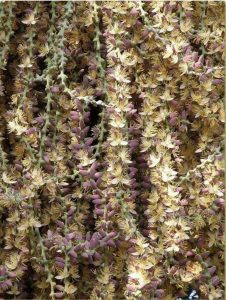
they die not too long thereafter
“OK Tommy, ‘I’ll admit to having had a toddy or two in my life, so what’s up with this palm’s name?”
Appropriately enough, beyond its sap being boiled down to make syrup or sugar, the inner tissue being used as sago (food starch), its leaves’ fibers being twisted and braided into ropes, brushes and baskets, various construction applications in timber form and even ornamental uses, it is perhaps best known for the alcoholic beverage that can be derived from its fermented sap!
This fermentation process is rather intriguing as there is virtually no alcoholic content when the sap is collected. But within a couple of hours it’s at 4%, after two more hours it’s at 8% and then, not long after that, woops, you have vinegar! A rather, amazingly, accelerated fermentation process I believe. I’ll drink to that!
Those who have toured Ola Brisa Gardens have heard me say that most palm trees are pinnate or palmate. Well, the Caryota species are unique with bipinnate leaves (meaning they are divided into leaflets that divide a second time). As the name infers, these leaflets are shaped somewhat like the tail of a fish thus, Fishtail Palm! The fronds of the Solitary Fishtail are bright Beautiful, but a harbinger of its demise as, once they flower,they die not too long thereafter to deep green, up to eleven and a half feet (3.5 meters) long and holding onto twenty-three and a half inches (60 cm) long petioles (leaf stalks). Each of these leaflets is around one foot (30 cm) in length with one pointed and one jagged edge.
All told, there are only twelve varieties in the Caryota genus with its special bipinnate or doubly pinnate leaves. As a result of these unusual leaves, all of this genus are easily recognized and each of these dozen species are called Fishtail Palms. They range from Tropical Asia through the Solomon Islands to northeastern Australia and most parts in between.
The Caryota urens is a solitary trunked palm – not to be con-fused with some clustering kin that grows up to 39 1/2 to 65 1/2 feet (12 – 20 meters) tall with a gray trunk which is covered with widely-spaced leaf-scar rings. The urens epithet is Latin for “stinging” or “burning” and alludes to the oxalic acid crystals contained in the fruits and which can, potentially, irritate our skin.
A unique aspect of these palms is that they flower only once in their lifetime and then they die. This flowering process, how-ever, is a bit unusual. It, normally, begins at the top of the trunk and then proceeds downwards. Sometimes this process takes several years. These, nearly ten foot (3 meters) long inflorescences, emerge at each leaf node producing pendent clusters of white, unisexual flowers which remain open for about six weeks.
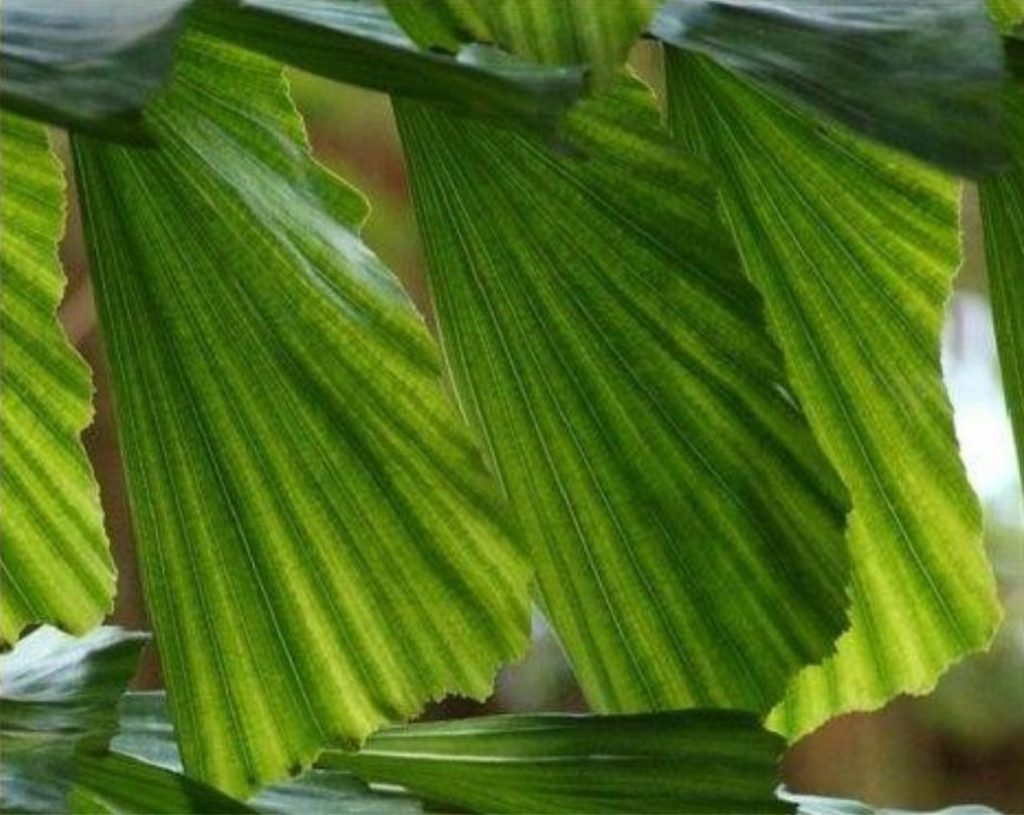
and one jagged edge
While the exact origin of Toddy Palms is unknown, today they can be found in clearings up to nearly one thousand feet (304.80 meters) above sea level throughout India, Sri Lanka, Myanmar (that was Burma, for all us old folks) and down the Malaysian Peninsula. As is the case for no few species of palms, a major threat to the Toddy Palm are disturbances resulting from logging and forest clearance, as well as human overuse for its benefits as described earlier. Such has severely affected its natural regeneration. As a result, in some of its native lo-cales, mature individuals are rarely seen. To grow your own, it needs abundant – and regular – water and humus in well-draining soil. A moderately fast grower, it can handle both partial shade to full sun.
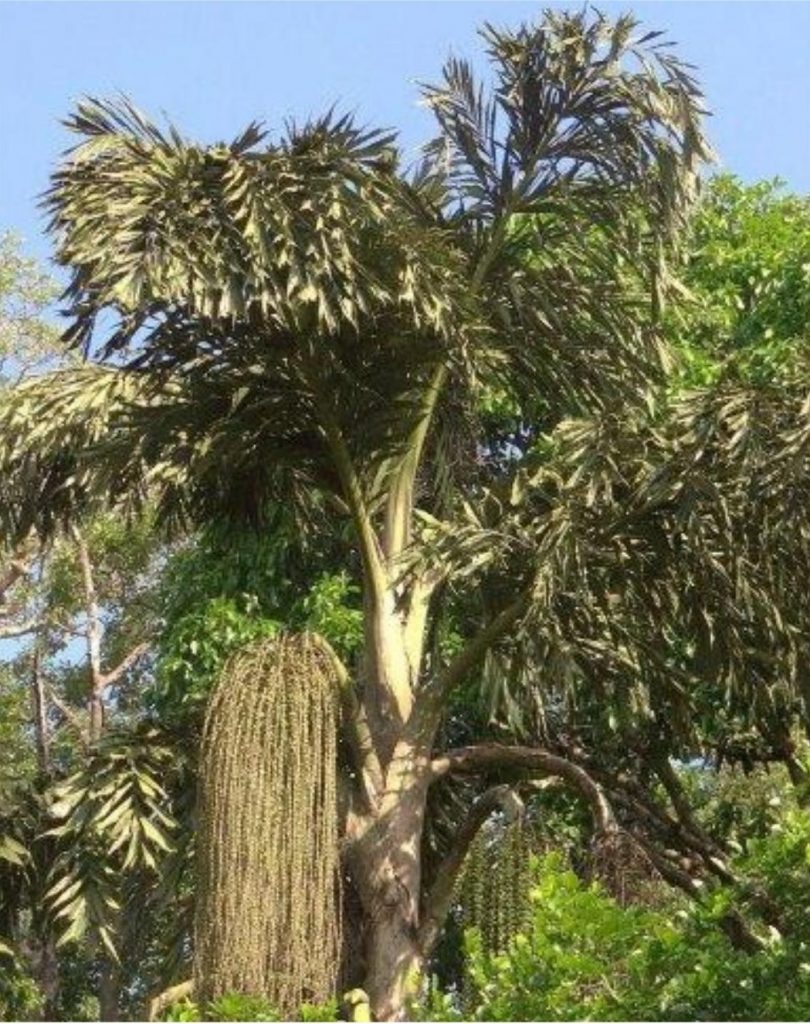
leaflets that are shaped somewhat like the tail of a fish
Around here, there are several entities that strive to help stray dogs. I think perhaps I should create a similar not-for-profit, volunteer organization for saving palm trees. We could call it the Save a Palm Society (SAPS)!
Download the full edition or view it online
—
Tommy Clarkson is a bit of a renaissance man. He’s lived and worked in locales as disparate as the 1.2 square mile island of Kwajalein to war-torn Iraq, from aboard he and Patty’s boat berthed out of Sea Bright, NJ to Thailand, Germany, Hawaii and Viet Nam; He’s taught classes and courses on creative writing and mass communications from the elementary grades to graduate level; He’s spoken to a wide array of meetings, conferences and assemblages on topics as varied as Buddhism, strategic marketing and tropical plants; In the latter category he and Patty’s recently book, “The Civilized Jungle” – written for the lay gardener – has been heralded as “the best tropical plant book in the last ten years”; And, according to Trip Advisor, their spectacular tropical creation – Ola Brisa Gardens – is the “Number One Tour destination in Manzanillo”.
